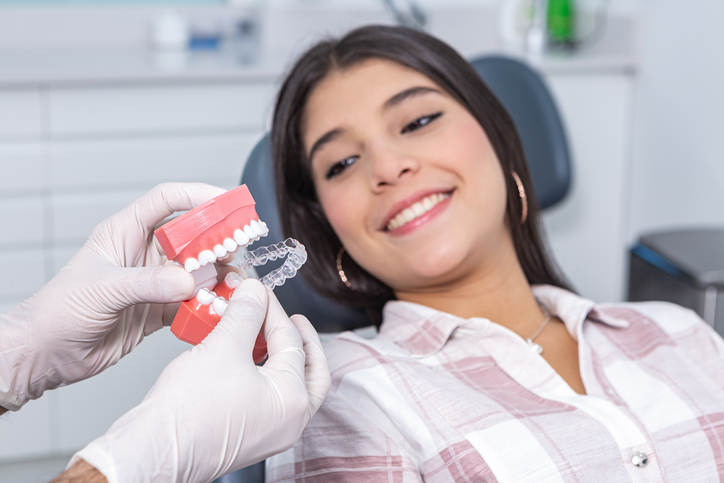In recent years, clear aligners like Invisalign have surged in popularity as a convenient alternative to traditional metal braces. Invisalign uses a series of clear, removable aligners to gradually shift teeth into an improved position over time.
As Invisalign alignments grow more prevalent, they are proving effective in addressing a variety of common underlying dental issues.
Many people deal with dental problems that negatively impact the health and appearance of their smile. Crowded, gapped or misaligned teeth can lead to oral health complications and self-consciousness about one’s smile.
Invisalign offers a discreet approach to realigning teeth and resolving several orthodontic issues.
Let’s take a look at the topic in more depth…
Common Orthodontic Issues
There are many common orthodontic issues that you may stumble upon and Invisalign can be a fantastic treatment for them!
Crowded Teeth
Crowded teeth occur when there is insufficient space in the jaws for all teeth to properly align. This can cause the teeth to twist or overlap, increasing the risk of tooth decay, gum disease, chewing issues and other problems. Invisalign can create room and guide crowded teeth into a healthier, straighter alignment.
Gaps Between Teeth
Gaps or spaces between the teeth, also called diastemas, can affect chewing capability and speech. Spacing issues also trap more food debris, making teeth harder to clean. Invisalign aligners close gaps by moving teeth together gradually over time.
Overbite
With an overbite, the upper teeth excessively overlap the lower teeth, potentially causing jaw pain and increased wear of tooth surfaces. Invisalign aligners can reposition the upper, lower or both sets of teeth to reduce this protrusion into a more normal, relaxed bite.
Underbite
An underbite exhibits the inverse relationship of an overbite, with the lower teeth extending out further than the upper teeth. Invisalign treatment can shift the lower or upper teeth to increase the overlap between top and bottom teeth into a healthier bite position.
Crossbite
A crossbite occurs when top and bottom teeth are misaligned, causing incorrect bite relationships from front-to-back or side-to-side. Invisalign incrementally straightens teeth to eliminate unhealthy crossbites.
Open Bite
An open bite means there is little-to-no overlap between upper and lower teeth when biting down. This misalignment can hinder proper chewing and place strain on the jaw joints. While Invisalign treatment aims to improve open bites, it cannot guarantee a full closure in all cases, as achieving complete overlap of the front teeth may not always be possible or achievable. The extent of correction depends on the severity of the open bite and individual factors.
How Invisalign Addresses Orthodontic Issues
Invisalign aligners offer an effective mechanism for resolving many dental concerns and aims to improve your smile.
Because Invisalign is custom fit to your unique case, treatment plans can target specific orthodontic issues in detail, a treatment built for your own smile!
The Invisalign system consists of clear, thin aligners made from smooth medical-grade plastic. Patients are provided an initial set of aligners and swap them out every 1-2 weeks for a new set that gradually shifts their teeth placement. Since the aligners are removable, patients can take them out for eating, drinking, brushing and flossing.
This offers a high level of comfort, convenience and discretion lacking in fixed braces. Invisalign enables patients to maintain good oral hygiene and avoids many of the dietary restrictions of braces. Aligners allow for natural and clear speech, unlike braces which can initially impair speech.
Invisalign also incorporates advanced 3D imaging technology to preview the planned movements and the outcome. This enhances the predictability and precision of treatment.
Limitations of Invisalign
While Invisalign has numerous advantages, there are some limitations in severe cases requiring complex tooth movements. Treatment times may also exceed those of conventional braces for significant realignments.
Responsible patient compliance in wearing aligners is also critical for Invisalign success, we can’t be with you 24/7 checking that you’re wearing your aligner!
Proven to be a versatile treatment capable of addressing many common orthodontic issues, Invisalign can help you get back your smile and in turn, your confidence.
To find out if Invisalign is right for your specific dental needs, schedule a consultation with M20 Dental today.

